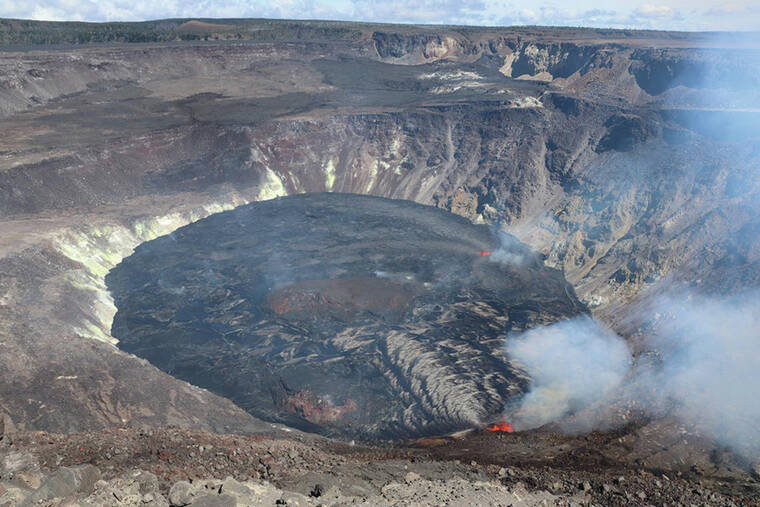Kilauea volcano’s summit lava lake rose by 3 feet between Monday and Tuesday, the Hawaiian Volcano Observatory reported Tuesday morning.
Kilauea volcano’s summit lava lake rose by 3 feet between Monday and Tuesday, the Hawaiian Volcano Observatory reported Tuesday morning.
Lava continued to erupt from multiple vents along the floor and western wall of Halema‘uma‘u crater as of Tuesday morning, the observatory said. All lava activity remains confined within Halema‘uma‘u crater in Hawaii Volcanoes National Park.
The west vent continues to be the most vigorous source, with sustained lava fountain heights of 43 feet to 52 feet and bursts up to 66 feet, according to the observatory. Other vents continue to be active in the southern part of the lake, with sustained lava fountain heights 3 feet to 16 feet.
Due to the location of vents, the lava lake remains uneven across its surface; areas closer to vents are higher in elevation. As of Monday evening, the west and south ends of the lake were about 3 feet to 7 feet higher than the east and north ends.
Meanwhile, the amount of sulfur dioxide being emitted by the volcano dropped to 7,000 tons to 9,000 tons per day as of Monday, down from 12,000 tons per day on Sunday, and 14,750 tons per day on Saturday. The rate reached 85,000 tons per day at the start of the eruption.
Seismicity remains elevated but stable. Summit tiltmeters continue to record deflationary tilt.
Prior the current eruption that commenced Wednesday, Kilauea’s most recent eruption occurred between December 2020 and May. The last major eruption occurred in 2018, destroying hundreds of homes and displacing thousands of residents. Since 1952, Kilauea has now erupted 35 times.




